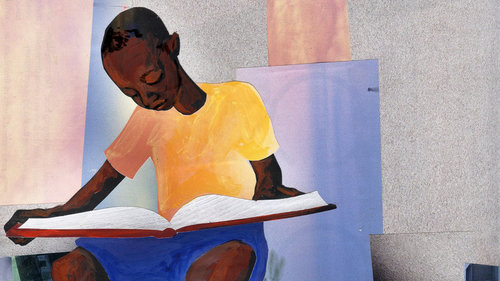
Laura, my friend and sustaining donor of the Kindle Classroom Project, sent me a New York Times op-ed this morning that decried the lack of people of color in children’s literature.
According to a study by the Cooperative Children’s Book Center at the University of Wisconsin, there were 3,200 books written for children last year. Of those, only 93 were about Black people.
My calculator says that’s 2.9 percent.
In a piece in today’s Sunday Review, Christopher Myers goes even further. He argues that there exists an “apartheid of children’s literature.”
In the op-ed, Mr. Myers writes that children see books as maps, as pathways toward their futures. If children don’t see themselves in books, they have trouble imagining diverse possibilities.
A fifth grade African American boy tells Mr. Myers that he wants to become a professional basketball player and a rap star when he grows up. To this Mr. Myers reflects:
Looking at him, I think that these are not necessarily his dreams; they are just the dreams that have been offered him, the places he can go in the narrow geography that has been delineated for him….As much as I hope that I’m wrong, that in several years the Brooklyn Nets sign a 5-foot-8 point guard with amazing flow, who raps and hoops in the same arenas, I think it’s necessary to provide for boys and girls like him a more expansive landscape upon which to dream.
When I was a teacher, this scene happened over and over. Most of my students had trouble envisioning their futures and the steps needed to get there. Though he does not state it explicitly, Mr. Myers implies that the lack of people of color in children’s books leads to less reading by children of color, thereby resulting in fewer trajectories as they grow up.
By no means do I assert that kids of color must read only books that include kids of color, but I do agree with him when he calls on “publishers, librarians, teachers, parents, and all of us” to fight against this apartheid by putting the right books into children’s hands.
I’m proud to say that the Kindle Classroom Project is making a contribution to this issue. Kindlers are 99 percent students of color. Sixty percent are boys. My other project, helping teachers build classroom libraries, is also starting to make a difference.
These efforts are made possible by generous donors. If you’d like to help out, please check out the new and improved Contribute page!
(Related article from the New York Times in 2012: Just 3 percent of children’s books in 2011 were about Latino kids.)

Thanks for posting this. It needs to be heard by many. My favorite teaching moments are when students see a narrative in a book, that is a counter-narrative to what the status quo offers them, and imagines a future anew.